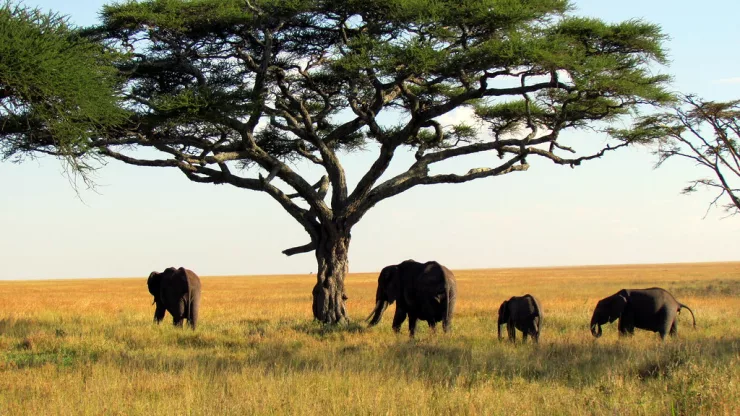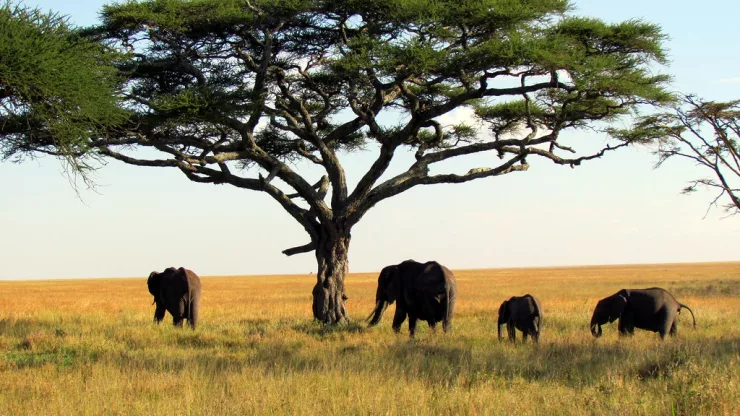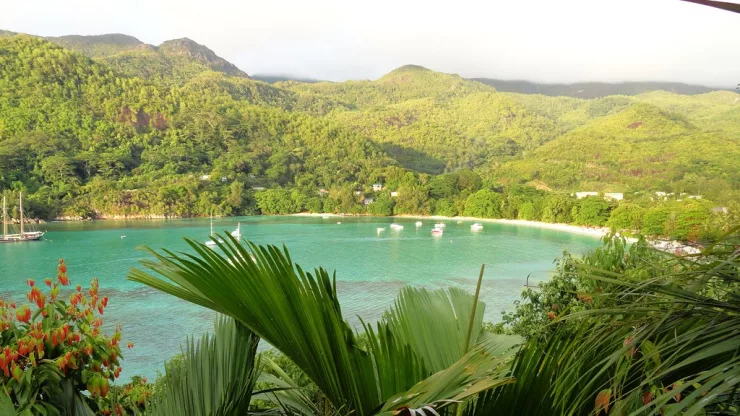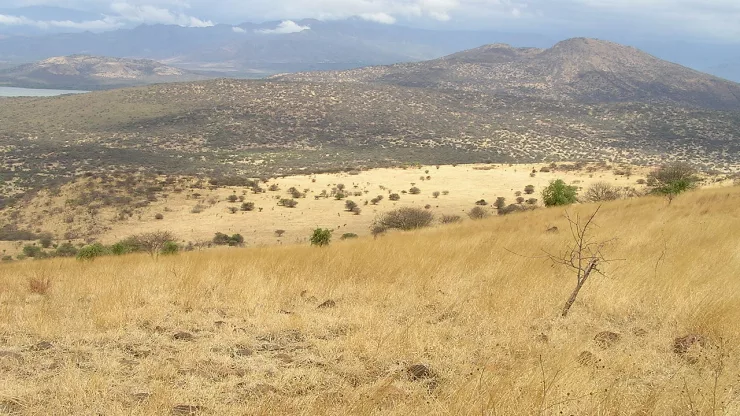Jump to Section
Discover the Wonders of Serengeti National Park
Tanzania’s Serengeti National Park is one of the world’s most awe-inspiring wildlife reserves, covering an area of 14,750 square kilometers.
The park is home to an impressive array of wildlife, including the famous Big Five – lion, leopard, elephant, buffalo, and rhino.
The Serengeti is also renowned for its spectacular birdlife, which includes over 500 species.
Visitors to the park can explore vast plains, rocky outcrops, and acacia woodlands, and witness the incredible natural spectacle of the Great Migration – the annual movement of millions of wildebeest and zebra.
The Serengeti is a must-visit destination for wildlife enthusiasts and nature lovers alike.
A Close Encounter with Serengeti’s Big Five
No trip to the Serengeti is complete without a sighting of the Big Five – the most iconic and sought-after animals in Africa.
Here’s a closer look at these incredible creatures:
- Lion: The king of the jungle is a top predator in the Serengeti and can be spotted lounging on rocky outcrops or stalking prey on the plains.
- Leopard: These elusive cats are known for their stealthy nature and are often found hiding in trees or stalking prey in the bush.
- Elephant: The largest land animal on earth, elephants roam the Serengeti in herds and play a vital role in shaping the ecosystem.
- Buffalo: These imposing beasts can weigh up to 900 kg and are often seen grazing on the plains in large herds.
- Rhino: The black rhino is a critically endangered species, but a small population can still be found in the Serengeti.
Behold the Spectacular Birdlife of Serengeti
The Serengeti is a birdwatcher’s paradise, with over 500 species recorded in the park. Here are some of the most spectacular birds you can see in the Serengeti:
- Secretary bird: This large bird of prey has long legs and a distinctive hooked bill, and is often seen stalking through the grasslands in search of prey.
- Kori bustard: The largest flying bird in Africa, the kori bustard is a regal-looking bird often seen strutting through the grasslands.
- Lilac-breasted roller: With its vibrant plumage and acrobatic flight, the lilac-breasted roller is one of the most colorful and striking birds in the Serengeti.
- Yellow-billed stork: This elegant wading bird is often spotted in the shallow waters of the Serengeti’s many rivers and lakes, feeding on fish and other aquatic creatures.
Unraveling the Secrets of Serengeti’s Ecosystem
The Serengeti is a complex and fascinating ecosystem, shaped by a diverse array of plant and animal life.
Here are some of the key factors that make the park such a unique and special place:
- The Great Migration: The annual movement of millions of wildebeest and zebra is one of the most incredible natural spectacles on earth, and plays a crucial role in shaping the Serengeti’s ecosystem.
- Acacia trees: These thorny trees are a vital source of food for many animals in the Serengeti, and their leaves are rich in nutrients that help sustain the park’s herbivores.
- Predator-prey dynamics: The Serengeti’s top predators – lions, leopards, cheetahs, and hyenas – play a crucial role in controlling the park’s herbivore populations and maintaining a healthy ecosystem.
FAQ
What is the best time of year to visit the Serengeti?
The best time to visit the Serengeti depends on what you want to see.
The Great Migration typically occurs between June and September, making this a popular time to visit.
However, if you want to avoid the crowds, consider visiting during the shoulder seasons (May-June or October-November) or the rainy season (March-May).
How do I get to the Serengeti?
The Serengeti is accessible by road or air. The closest airport is Kilimanjaro International Airport, which is about a 6-hour drive from the park.
Many visitors opt to fly into Arusha or Dar es Salaam and arrange a safari tour from there.
Is it safe to visit the Serengeti?
The Serengeti is generally a safe destination for tourists, but it’s always important to take precautions and follow the advice of your tour guide.
Avoid wandering off alone and keep a safe distance from wildlife at all times.
It’s also recommended to get a yellow fever vaccination before traveling to Tanzania.
I’m a nature enthusiast and creator of Metro Wilds and have spent years exploring the great outdoors.
With a passion for environmental conservation and sustainability, I have dedicated my career to writing about the beauty and wonders of nature, as well as the threats facing our planet.
Contact me at [email protected] for assistance.





